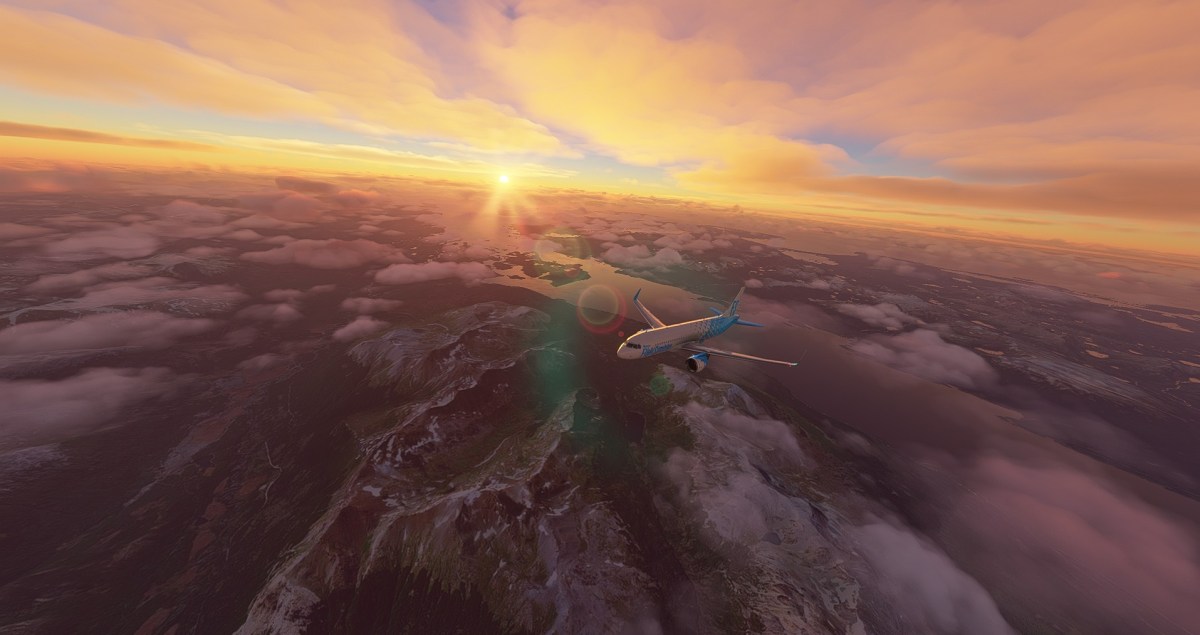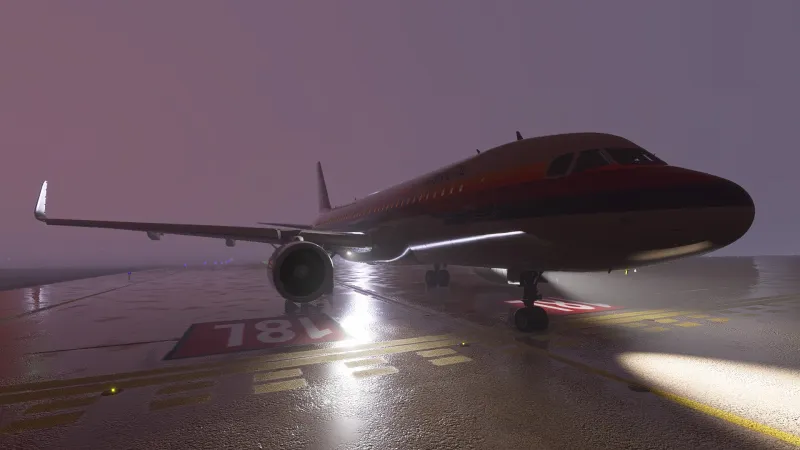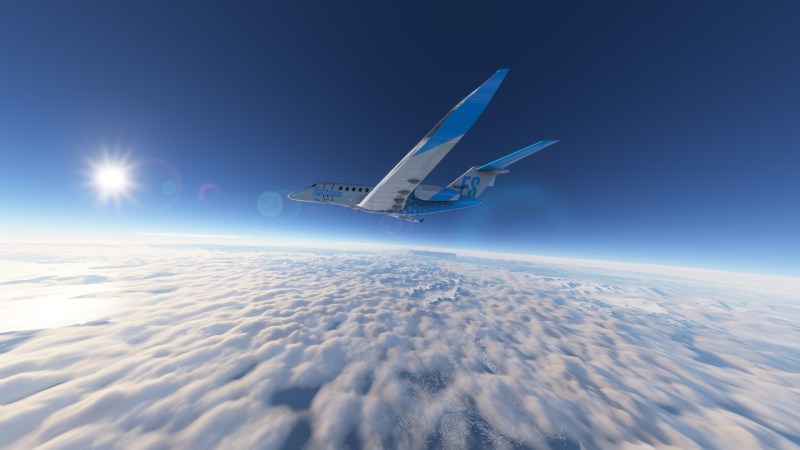Although Xbox players have only recently been able to marvel at the beautiful world of Microsoft Flight Simulator, PC players have now had the privilege of enjoying the sim, and its updates, for over a year. Really, the experience that console-bound players have been introduced to is a path that PC paved the way for. Indeed, in the year since the revival of Microsoft’s longest-running game series, so much about it has changed.
Thus, as fans look ahead to what lies beyond the horizon, I figured now’s the perfect time to see just how far the sim has come. As the old saying from Maya Angelou goes, “If you don’t know where you’ve come from, you don’t know where you’re going.”
A hype-filled takeoff
There’s no denying that there was an absurd amount of fanfare in the lead-up to the launch of Microsoft Flight Simulator. Its reveal in 2019 sent shockwaves pulsing throughout the entire sim community. This long-absent giant was finally being shaken back to life, not as a simple re-release or remaster, but a full-on revival with next-gen tech, that goes far beyond anything else in the genre (and then some). In short, Microsoft recruited the talented Asobo Studios to give its legacy series an entirely new lease of life, and this arrangement has paid off handsomely. With Microsoft’s huge amount of resources and Asobo’s technical prowess, the result has been nothing short of marvelous. And really, that technical edge is what the sim always had going for it, ever since the first trailer dropped.
Everyone was enamored by one thing: “Look how pretty it is!” The clouds, the terrain, the minute details of every aircraft; everything just glowed with a prominence that left both sim veterans and complete gaming casuals somewhat speechless. This effect bled straight into what turned out to be a situation that’s both extremely ironic and arguably very beneficial: the COVID-19 pandemic.
Unintentionally good timing
2020 will forever be remembered as the year that the entire planet stood still for a brief period. The rapid transit infrastructure that humanity has built over the decades was temporarily shut down as borders closed and travel restrictions were enforced. Of course, this also meant the skies above were eerily absent of most traces of any aircraft whatsoever. Yet, in the heat of it all, Microsoft Flight Simulator literally swooped in and unlocked the entire world, albeit virtually.
Yet, its aforementioned high level of presentation made it feel as if the restrictions of the pandemic were some dystopian fantasy. Here it was, a single simulator containing high-level satellite imagery of the globe, along with the graphical effects to make it all look so believable. With it, people flew over their homes, and to faraway destinations, all from the comfort of their homes.
Considering that the stay-at-home orders around the world also forced people to take to social media more so than usual, scenes from Microsoft Flight Simulator briefly took over those airwaves too. YouTube influencers and news outlets (like us!) aplenty showed off the title, leading to even more hype following its release. As unfortunate as the pandemic was for so many reasons, there must be some guilty pleasure ruminating in the minds behind the sim, knowing that its popularity was certainly exacerbated because of COVID-19. This is pretty much a textbook example of making the most out of a bad situation. But, all of this pomp and pageantry wouldn’t save the sim from encountering some trouble.
Ascent into turbulence
After the initial wave of “Ooohs” and “Aaaahs” began to subside following the release of Microsoft Flight Simulator, the criticism began to roll in like a menacing wave of thunderstorms. Some veteran sim players in particular, began to throw some turbulent blasts at Asobo for some very undeniable issues. Some of the most impressive features of the sim were bogged down with bugs, such as the live weather system, and even more egregious was its performance and stability. While this may be a revival that took nearly two decades to be released, it certainly didn’t seem to forget its family lineage. Just like its predecessors, Microsoft Flight Simulator once again became infamous for making even the beefiest of machines sweat and swelter.
Forum post after forum post in those early days seemed to complain about the same thing: low framerates, freezing, stuttering, and crashes. If core game problems weren’t the issue, then there was the criticism about its “lack of realism”, as some sim vets put it.
The airliners in particular were pointed to as being lackluster and too simplistic. Indeed, just as quickly as Asobo was heralded for its grand achievement, it was flacked for “not getting it right”, as some felt was the case. These cracks of thunder grew especially loud when updates were released to fix issues, only to then end up creating a series of new ones.
As someone who did review the sim at launch, I can verify that the skies weren’t smooth on the way up to where it is now. While some of the complaints are arguably hyperbolic, I’d absolutely be lying if I said I didn’t have at least a few notches of disappointment with some parts of the sim, particularly its performance inconsistencies. Having bought a new gaming laptop with this very program in mind, it was kind of disheartening to watch my machine cry a bit every time I’d fire the sim up. But, as I’ve acknowledged in the past, Asobo has come out through the other side with flying colors.
Riding the jetstream
Asobo established a level of very notable transparency since Microsoft Flight Simulator was initially announced. The team adamantly declared that it wanted to build it with the sim community at its side. This promise has absolutely been honored. In addition to the collection of interviews and behind-the-scenes videos, Asobo has been continuing to publish a weekly dev update even before the sim got off the ground. Even in the weeks where there’s not much to say, that update gets published. Added to this is the very consistent updating of the actual sim itself.
When bugs aren’t being fixed, new core features, such as VR support, are being added to Microsoft Flight Simulator, and improvements are being made in what is known as Sim Updates. Then there are the World Updates which have been making gradual overhauls to the sim’s virtual world on a regional basis. Not only are the details of each update extensively covered in the lead-up to its release, but as of recently, Asobo has even been inviting regular simmers to gain early access for testing purposes; again going back to the team’s commitment to community integration.
The cherry on top of all of this internal growth is external growth. Add-ons from both payware experts and talented, kind-hearted freeware masterminds have given the sim a dramatic boost in the single year it’s been on the market. From impressive new aircraft to very handy utilities, beautiful scenery upgrades, and shiny new liveries, Microsoft Flight Simulator is being injected with new content on a daily basis. All of these “extras” will be continuing to pour in as long as the sim remains active, and Microsoft is intending for that to be the case for the next decade.
To higher altitudes and beyond
The recent Sim Update V marked a new chapter for the sim and its future. Aside from now also being a duality on PC and console, Microsoft Flight Simulator is finally in a relatively stable place to really start spreading its wings, following numerous updates. The aforementioned performance hiccups have (mostly) been addressed, giving players far and wide the best experience they’ve had since launch. Now that this big hurdle is mostly taken care of, Asobo can continue to focus on advancing other areas of the sim such as its flight mechanics, aircraft systems, weather engine, and more. These are all areas that have been receiving improvements already, and that won’t stop.
Like the world itself, Microsoft Flight Simulator is proving to be continually refreshed with updates. In just a year since take-off, it’s gained some serious altitude and only seeks to go higher. Whether or not you want to call it the “best sim ever” is a moot point — as it will likely continue to hold its crown as the largest, most complex one in the history of the entire genre. As Asobo continues to work on making it only bigger and better with time, the future remains bright for this massive project, inching ever closer to the series’ tagline, “As real as it gets.”













Published: Aug 24, 2021 11:33 am